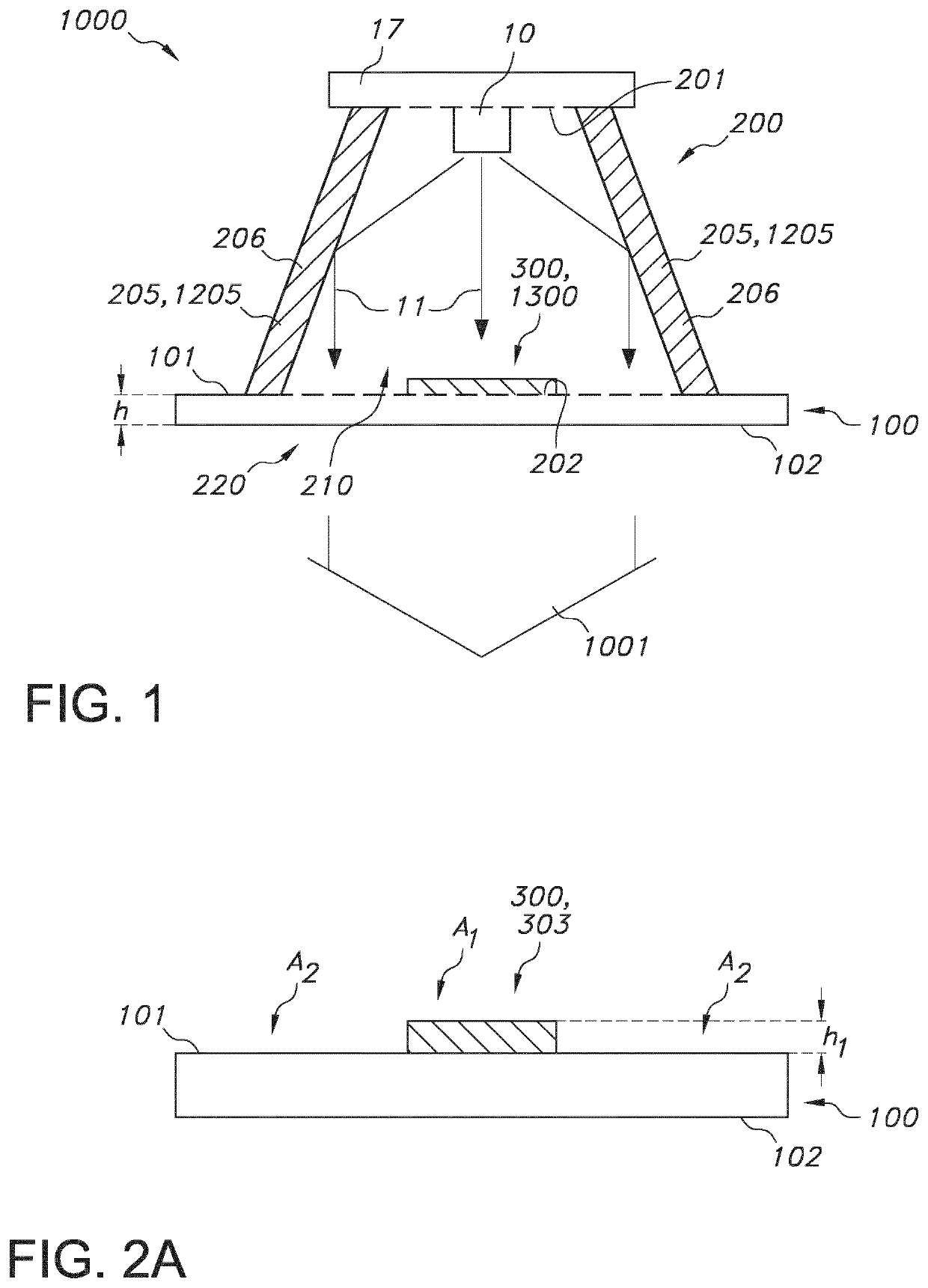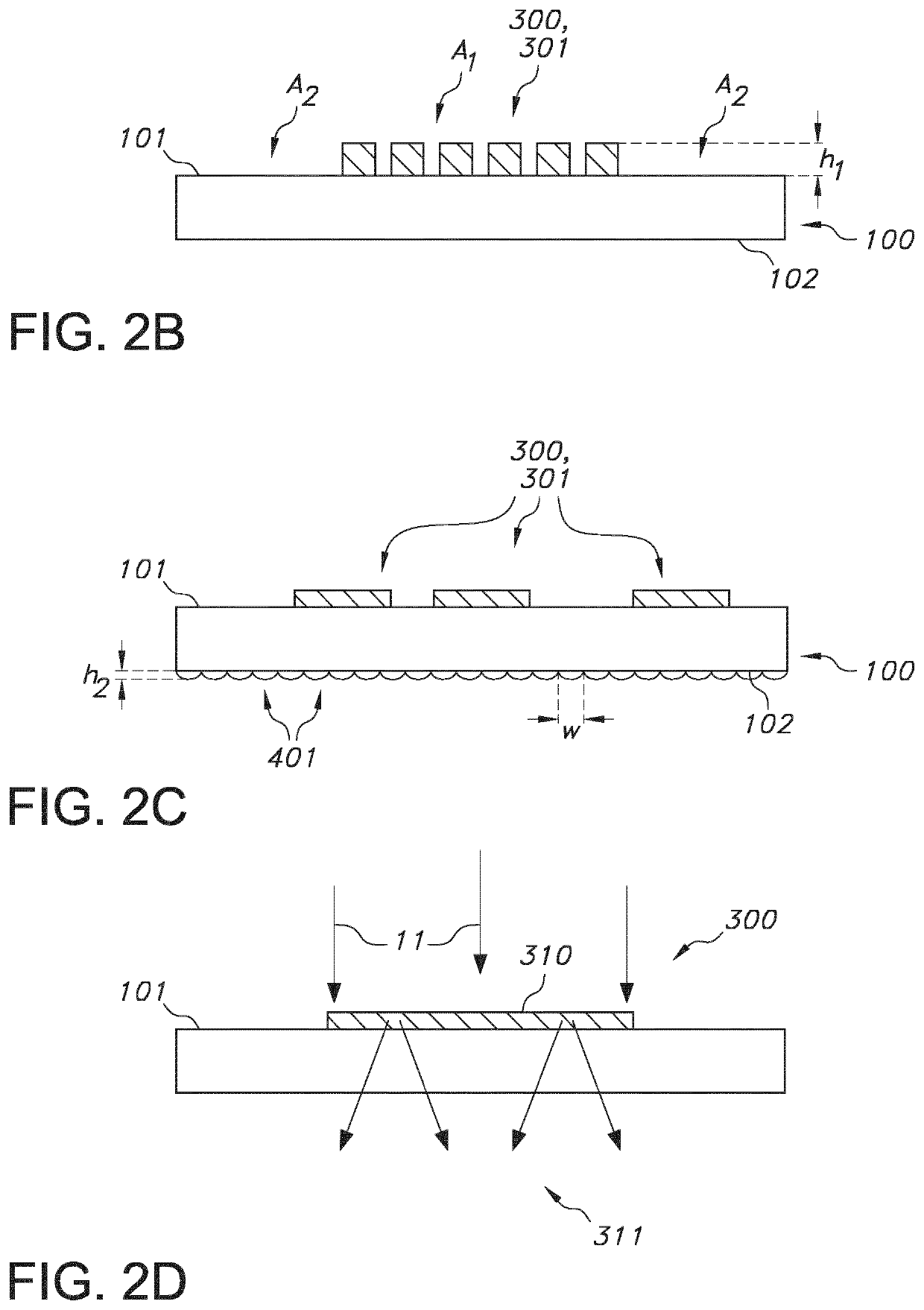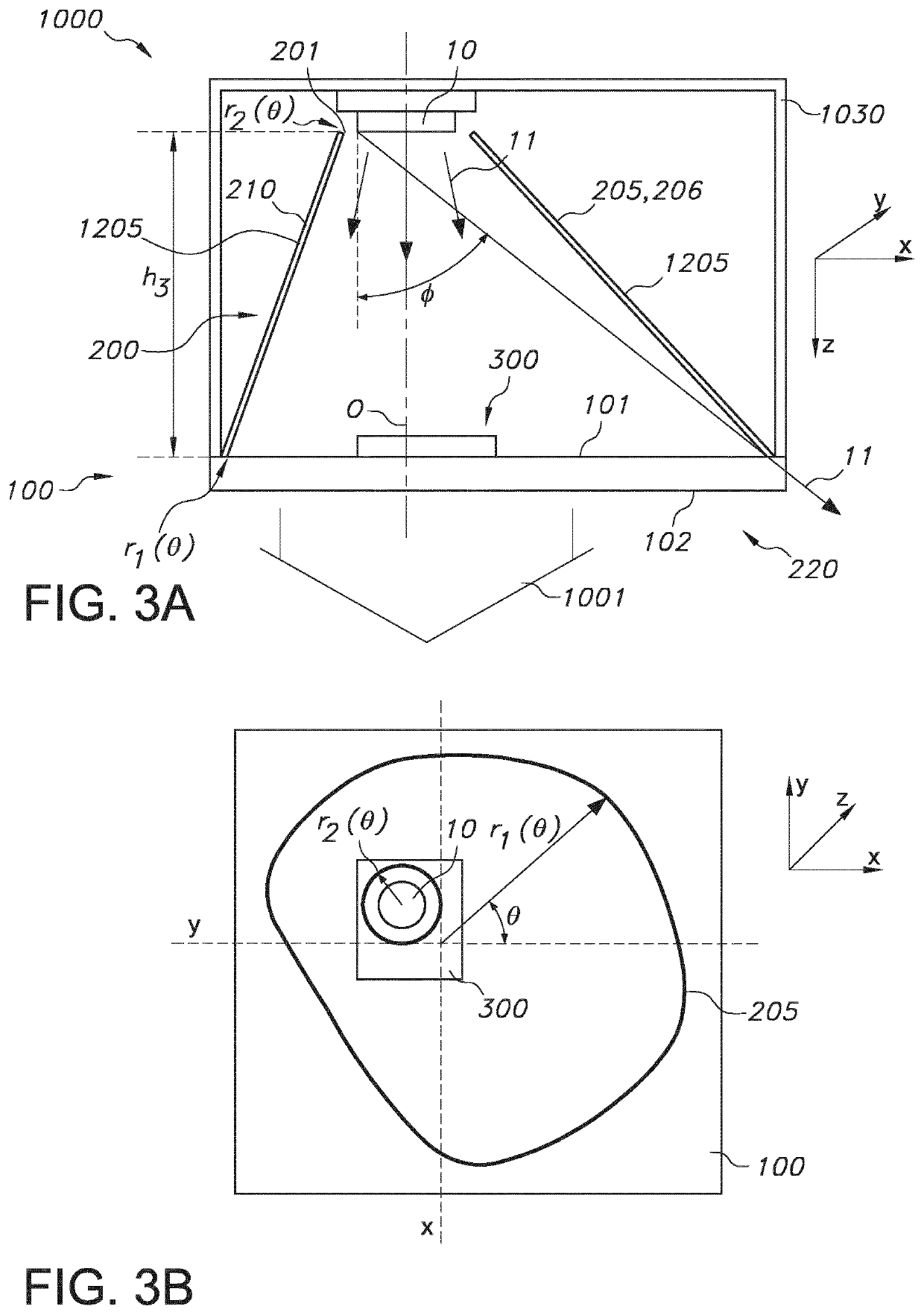Customizable 3D-printed lighting device
a 3d printing and lighting technology, applied in the field of customizable 3d printing lighting devices, can solve the problems of limited customization of downlighters' light distribution, and achieve the effect of improving adhesion between parts and adhesion between parts
- Summary
- Abstract
- Description
- Claims
- Application Information
AI Technical Summary
Benefits of technology
Problems solved by technology
Method used
Image
Examples
Embodiment Construction
[0066]3D printing of e.g. downlights offers unique design and customization opportunities. One may design almost free-form intensity profiles and create a look and feel with fits to the unique architecture of a new or refurbished building. It also offers opportunities for retrofitting existing lighting systems (i.e. systems based on TL or other conventional light source). This means that is possible to reproduce the intensity profile of a conventional luminaire exactly by a 3D printed lighting system. This invention describes a process to fabricate tailor-made lighting devices, such as downlights. The described technology and embodiments are not limited to downlights but can be applied to e.g. office lighting and high-bay lighting as well. The invention focuses on Fused Deposition Modelling (FDM) which is also called Fused Filament Fabrication (FFF).
[0067]FIG. 1 schematically depicts an embodiment of a lighting device 1000 configured to provide a beam of lighting device light 1001. ...
PUM
| Property | Measurement | Unit |
|---|---|---|
| thickness | aaaaa | aaaaa |
| thickness | aaaaa | aaaaa |
| wavelength | aaaaa | aaaaa |
Abstract
Description
Claims
Application Information
 Login to View More
Login to View More - R&D
- Intellectual Property
- Life Sciences
- Materials
- Tech Scout
- Unparalleled Data Quality
- Higher Quality Content
- 60% Fewer Hallucinations
Browse by: Latest US Patents, China's latest patents, Technical Efficacy Thesaurus, Application Domain, Technology Topic, Popular Technical Reports.
© 2025 PatSnap. All rights reserved.Legal|Privacy policy|Modern Slavery Act Transparency Statement|Sitemap|About US| Contact US: help@patsnap.com



